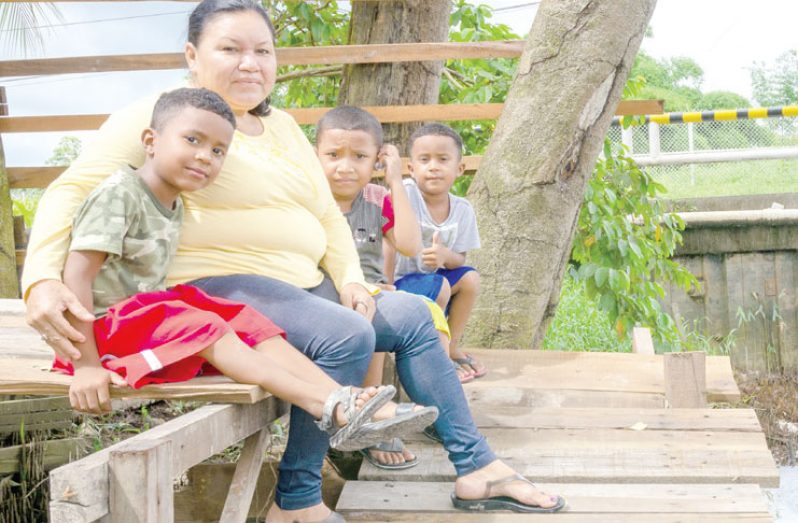Amid the growing Venezuelan migrant population in Guyana
By Shirley Thomas
AS A child, I always heard talk about Guyanese hospitality and our peace-loving nature and in fact, it was in this context that at an early age, I came to grasp the meaning of the word ‘hospitality.’ More than 50 years later, one can truly say that it informs the way the average Guyanese reaches out to and renders goodwill and acts of kindness to persons in a predicament or otherwise seeking help to find their way around.
But who can better attest to this than the people of neighbouring Venezuela, hundreds of whom continue to turn up seeking to make Guyana a home, as a result of the economic turmoil in that country for the last several years? Whereas the numbers were initially small, with Guyana continuing to respond positively, there is now a great influx, which has seen the numbers rise to thousands so far.
But while relations between the people of Guyana and those seeking residency status remain cordial, the biggest problem continues to be that of ‘a language barrier.’ This is so, with more than 50 per cent on both sides not being able to read, write and speak the language of the other nation. This fundamental problem could potentially hinder the very essential ‘communication flow’ – not least between ranks manning Guyana’s ports of entry and the Venezuelans seeking to enter these shores to eke out a living for themselves and families and start life all over again.
Meanwhile, kudos are in place for Guyana’s Ministry of Education, the International Organisation for Migration and the Ministry of Citizenship for jointly assessing an initiative which seeks to teach our local border ranks Spanish as a second language, in order to better equip or prepare them to effectively communicate with the immigrants. The parties committed to future collaboration to fill the gaps and to achieve the objectives in the education sector.
Meanwhile, a United Nations study conducted on the Barima-Waini, at Mabaruma, Region One, determined that there is need for infrastructural development, education and cultural re-integration among other things, to make for improved access to quality education.
So far, the only immigrants who seem not to be experiencing a complete language barrier given the foregoing scenario, are Guyanese who had left these shores and migrated to Venezuela decades ago, continuing to live there until the present political and economic turmoil facing the people of that country.
However, their children who have been introduced to Guyana and integrated into the school system here, still face the problem of a language barrier since, invariably, Spanish is the only language they would have been learning within the education system and hearing daily.
To this end, concerned persons are of the view that institutions should be set up–even if only on a small scale initially -– where Venezuelans could be taught ‘English as a Second Language’ soon after arriving here. Likewise, Guyanese wishing to learn Spanish to be able to better communicate with their Spanish-speaking counterparts or business associates, can ‘zero in’ on the services of the centre in Queenstown, Georgetown. This facility has, for years, been teaching Spanish with remarkable results. Similarly, other teaching facilities could be set up through which medium there can be a rich cultural exchange, as well as the setting up of other teaching facilities.
Against this backdrop, and with the constantly growing numbers of non-English speaking countries arriving here for extended periods, the question is now being asked: “Is Guyana fast becoming a multi-lingual country?” Over time there has been a rapid build-up of nationals from non-English speaking countries, including China and Venezuela.
Finding refuge
In the North West region, the regional administration has been very open and supportive, providing help in diverse ways, including the Mabaruma Regional Hospital which continues to provide medical care for parents who are Venezuelans, as well as sick children.
Forty-two-year-old remigrant, Ann Fredericks, fleeing from troubled Venezuela asserts: “What we were looking for was a better life and if you work and the money can’t buy your essential needs, then it’s no use staying around. But worst of all, is being unable to access medical care, even in times of medical emergencies.”
For several days, her eight-year-old son was sick with terrible abdominal pains and high fever, then death stared him in the face, and based on what was happening. “I knew that my son had only about eight more days to live … then he’d be gone forever. But thank God who was in front of everything. We hurried home to Guyana and when we reached my brother in Guyana, we were no longer short of anything,” she said.
As the migrants from Venezuela continue to pour in, particularly in areas such as the waterways around the Barima- Waini Region One, they have been wholeheartedly accepted and befriended by the ‘hospitable residents of the region who continue to accept and befriend them – providing temporary living accommodation for them until they get ‘back on their feet again’; supplies of water, food and clothing. Others still have found favour with churches that have brought them the message of salvation, while being a virtual source of help for them and their families.




.png)









